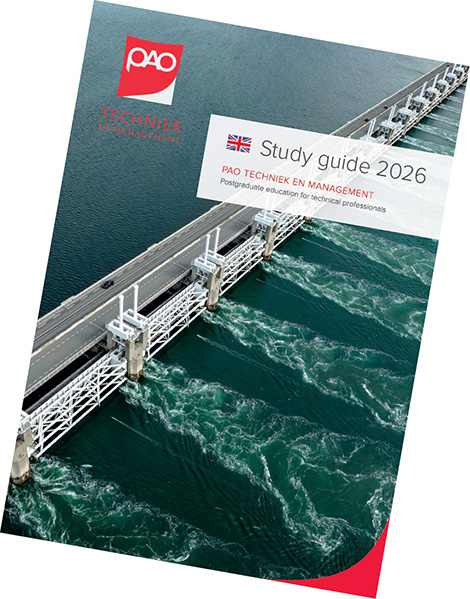"With the right application of data, you can stand out and get ahead of the curve"
Hendrik-Jan de Kort is operations manager at SPIE Netherlands. SPIE puts the world we live, work, and play in, in motion. The solutions offered help buildings perform optimally, make cities smarter, facilitate the energy transition and make industrial activities more sustainable. Within e-fficient building Hendrik-Jan is responsible for activities in the field of application development, application management and Quality Assurance.
Why did you follow this incompany training?
Within SPIE Netherlands several expeditions have been started for the theme Digitization. For the expedition Artificial Intelligence (AI) and Business Intelligence (BI), Hendrik-Jan is expedition leader. SPIE is investigating how to use AI techniques even more efficiently in the future. One component is AI knowledge building, and from there the training was born. "We want to get a picture of what is involved in an algorithm, what you can do with it and what the value of data is."
The team attending the incompany consists of the expedition team supplemented by employees from other disciplines including the IT architect, technical engineers and technical consultants: a mixed group, all working with data. "We really want to be able to look under the hood.” What conditions must you meet to start using predictive algorithms at all? An important application for SPIE could be that, based on machine learning, they can perform predictable maintenance.
Did the course move the group forward?
There was a good awareness of what it all means. Someone in the group literally said:"The romance of AI has worn off now."In other words: you must work very hard for it, and it is quite complicated. The participants gained insight into what you would have to do with data and what considerations they should make to arrive at a recipe with which they can make predictions. So, it's about function and insight, and also about the operational part: actually getting to work with it. The knowledge gained is applied in the current expedition phase, where discovery and trial and error are central.
What will the follow-up look like?
The incompany consisted of four intensive days. Based on their own data set, the team wants to repeat what they have learned and eventually follow through. What models can you apply and what mathematical and statistical quantities do you choose for a model that will predict the highest probability? And then there is the translation into an application that someone can start using (user interface). The team wants to explore that piece, too. "It has to be a showcase, we want to be able to take it out into the country: look, this is what happened in the background, this is our end result, and this is how you can use it."
The expedition team AI also wants to transfer the knowledge to management and the layers below. “"With the knowledge holders, the expedition team and a knowledge team, we are going to work out the business case. And we're then going to use that to start creating awareness within the organization. That's the idea. And to practice so you get to know all the steps."So, they really get to work by themselves first, and the PAOTM course leader remains available to ask questions. "It's literally an expedition. We take one step at a time to eventually be able to start making sensible policies."
Do you already have an idea what software you will use?
The idea is that Orange will be used, with Python in the background. From the expedition we will figure out how to proceed. For example, PyTorch or Microsoft Azure could make the connection between the algorithm and the end user.
How did you find PAOTM?
It was through SPIE Building Solutions, formerly known as Strukton Worksphere. "They had already done business with PAOTM to their satisfaction and recommended an incompany."
Why did you choose an incompany, and not register for an open course?
An important consideration was that within the training budget there was room for either having four participants individually attend an external training or giving a group of ten an incompany classroom course. Besides this financial consideration, the purpose of the expedition is to bring it to life within SPIE. Hence, an incompany was a logical choice. SPIE also looked around at other providers. Two things were decisive in choosing PAOTM: advice from colleagues and the first contact was positive. "The feeling was good, the communication was pleasant. Then I need to look no further."
Did you see the incompany format as an added value, that your people took the course together?
"Yes indeed, that was also .one of the reasons why I wanted this kind of course.” SPIE Netherlands has about 5,500 employees divided into four market segments (e-fficient buildings, smart city, energies and industry services). The goal is for people from all over SPIE Netherlands to get in touch and know how to find each other, to create an internal network of knowledge holders.
Do you now notice that colleagues seek for each other more quickly?
Do you now notice that colleagues seek for each other more quickly? "That way I'm going to try to keep it alive. A pitfall is the delusion of the day, which makes it hard to find time for it." SPIE wants to avoid that.
Would you recommend this course to others?
Hendrik-Jan would definitely recommend the course. With an important point to note: if you choose a similar post-academic incompany on this topic, participants should have had subjects such as math and statistics and have recently updated their knowledge in this area. The course leader helped with that prior to the training. "You really have to understand what is happening, which was tough sometimes!"
To conclude
Hendrik-Jan: "What I find positive and important is that we, as an organization, are making the right choices for the long term - with management - regarding the application and importance of data in our services. With these trajectories we can get ahead, or at least maintain distinctiveness in the market, because that's why you want to do this as a company. You also must deal with external factors that make it increasingly important to understand data well and use data in the best way possible. And so, I'm glad that we, as an expedition, have taken the first step in this direction."
Course leader

dr. Koo Rijpkema
“For me, teaching means sharing knowledge and passion, inspiring and fascinating people through the application of statistics.”
Download the Study Guide
Would you like a complete overview of all our courses and trainings? Download the digital study guide!


